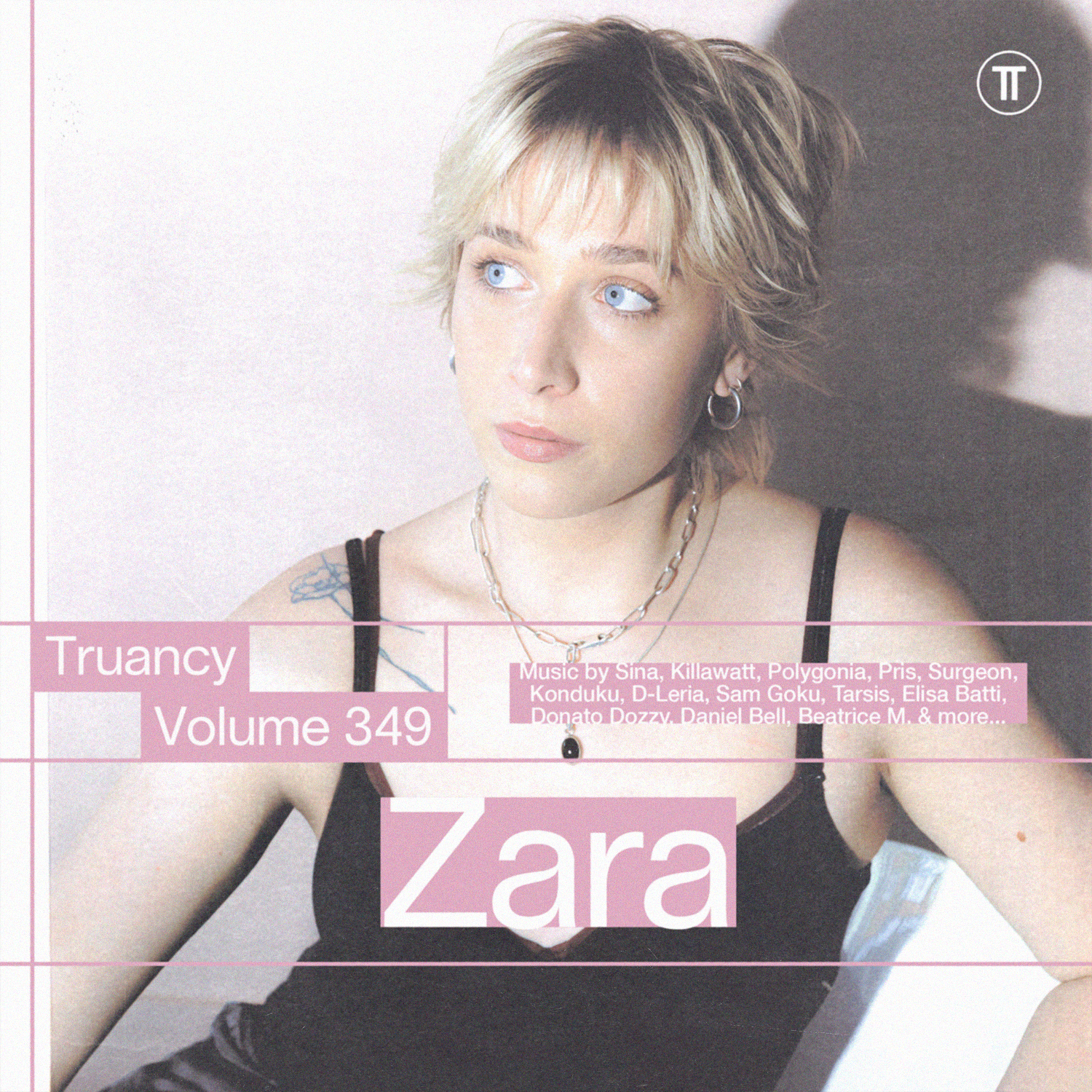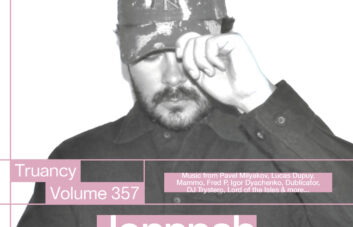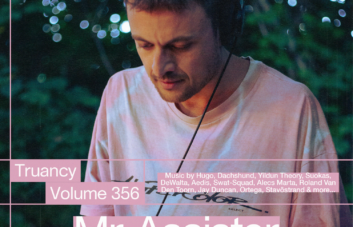With a string of deeply textured releases on labels such as like Animalia, Salt Mines and Pure Space, Zara has spent the last two years ascending into a sphere uniquely her own. Her 2022 Reverie EP, released via Andy Garvey’s Pure Space, leaned into ambient mutations and IDM-adjacent introspection, while her Animalia outing layered rhythm, bass, and atmosphere with an ear tuned to the micro-emotional. That sense of tension and experimentation has fed into her debut label project, Kinesis Recordings, which she launched with an inaugural VA compilation KINES01 late last year. Featuring cuts from Tangerine, Sina, Iza Basia, and a collaborative track between herself and Tadhg, the release is a crystalline snapshot of a label intent on worldbuilding. As Zara puts it, “The goal was to curate music that feels timeless and free (or as much as possible) from trends – something you could return to years later and still connect with.” She’s creating space for experimentation and inviting you to slowly immerse in a scene sometimes too obsessed with acceleration. Still, Zara’s approach remains grounded in the natural world. Whether it’s drawing from the psychedelic openness of outdoor festivals like Woodburnia or the spatial energy of her first clubbing experience at Tresor, environment plays a crucial role in how she listens, plays, and creates.
Having recently relocated to London from the sun-drenched coasts of Australia, Zara now finds herself steeped in the raw historical weight of the UK’s dance lineage, a shift that felt inevitable after an AV Perspectives party at south London’s Ormside Projects late last year. This sense of motion and reinvention carries through into her new live show, a format she’s been sculpting on the fly with stops at Paradiso in Amsterdam and Naarm’s Miscellania. Built from scratch in just a few weeks, her debut performance was, in her words, “one of the scariest musical things I’ve ever done.” But that leap into the unknown unearthed new creative pathways.
Zara’s music lives between dimensions, and so do her DJ sets. Whether crafting genre-fluid journeys for Monument, Inveins, or Sure Thing, or bringing heat to spaces like De School, Tresor, or Donato Dozzy’s Spazio Disponibile showcase, she fuses drum & bass, IDM, ambient and techno into seamless deep polyrhythmic trips. With such a list of mixes in her bag we couldn’t wait to see what she came up with for us. A deeply introspective journey, grounded in the concept of a slow descent in and out of chaos, her Truancy Volume, clocking in at a huge 105 minutes, is a an imagined trip through a magical garden powered with the communal energy of a summer festival. Featuring music from the likes of Sina, Killawatt, Polygonia, Pris, Surgeon, Konduku, Beatrice M and lots more, Zara’s distinct sense of patience and emotional depth has produced another stand out mix.
Zara: This interview uses Aboriginal place names such as Naarm (Melbourne) and Gadigal (Sydney) in recognition of the Traditional Custodians of these lands. I acknowledge their deep connection to Country and pay respects to Elders past and present.
Hey there Zara, hope you’re good! So how have you been recently? What’s the year been like for you so far? Any particular highlights you care to tell us about? “Hey! Thanks so much for having me – it’s such an honour to be on the platform <3 I’ve been really good; life has been relatively chill so far this year! After returning from Europe last year, I’ve been based on Gadigal Land (Sydney). Being home is a highlight in itself – it’s always inspiring and refreshing to spend time in nature and be surrounded by friends and family.
This inspiration bled into the musical realms too, and this past couple of months playing and attending gigs really fostered a deeper reconnection with my initial impetus for pursuing music. I started the year with a b2b set with Andy Garvey at the Pure Space x Translate x General Merchant 18-hour NYE to NYD party, spread across two warehouses on Gadigal Land, shortly followed by playing at the Animalia x Amenthia weekender at a club in Naarm (Melbourne) called Miscellania. These two were particularly special to me – not just because of the incredible musical programming and warm crowd, but also because they unfolded over two days. I am particularly drawn to longer parties, where the ‘peak party’ energy shifts into an ‘after hours’ vibe. This shift creates a new magical energy, born from the comfortability of people in a more relaxed and open state.
Of course, dancing outdoors is always a highlight so in February I travelled six hours north, to a lush tropical oasis on Gumbaynggirr Country to attend a festival called Woodburnia. The festival consisted of three days of boundary-pushing trance, tekno and everything in between. My last gig at home was a 300-person festival called Mach One, was a heartwarming farewell and felt like the perfect end to a beautiful summer.
I’ve been so grateful to be based on Gadigal Land and experience the scene there. The underground scene here consists of a few warehouses run by collectives who responded to and resisted the harsh lockout laws that that severely impacted the local nightlife. I was constantly in awe of the dedication and passion of the local community, and I really cherished the events I both attended and played in intimate smokey spaces.
On the other side of things, I studied law and have been doing my practical legal training so I can get admitted in the future. It was full-time study and took up a big portion of my time, so my production and mixes slowed down a bit… but it’s also been nice to take stock, reflect, and relax over summer before moving overseas.”
You’ll be moving to London this month, correct? I think you should have had your last two Australian gigs by the time you get to answer these. What has inspired the move? Have you been able to experience London nightlife prior to moving? “Yes! I actually just arrived last week and will be based in London for the next little while :) My interest in the UK stemmed from a combination of the history of UK dance music, alongside the contemporary scene and its similarities to the scene back home. There’s something about the music and history in the UK underground that feels like a constant push against dominant forces with a hunger for innovation.
Last year I volunteered at the Dekmantel opening conferences, helping out during Mark Harrison’s (a member of Spiral Tribe) movie screening and talk. I was so taken aback by the intense passion and purpose of the people within the movement – individuals risked lives and freedom to create spaces of escapism for others. Music in this context felt so political and purposeful.
In November last year, I played with Perspectives, an amazing femme-led audio-visual party at Ormside Projects – and honestly, it just clicked. Being there felt right, and I knew I wanted to live here. During my prep for that gig, I realised how much UK dupstep-influenced techno I have and love. I really connect with that bass-driven, rhythmic style of music, shaped by a melting pot of influences, particularly the profound impact of UK sound system culture, which has its roots in the Caribbean communities that brought this tradition to the UK.
I also think the contemporary scene has a lot of parallels to the one back home in its push for diversity and supportiveness, seeking to nurture unique voices and talent. I suppose I’m also drawn to the chaos and hustle of the city too – it’s hectic, but the energy is inspiring and fuels my creativity. But hey, we’ll see how it goes :’)”
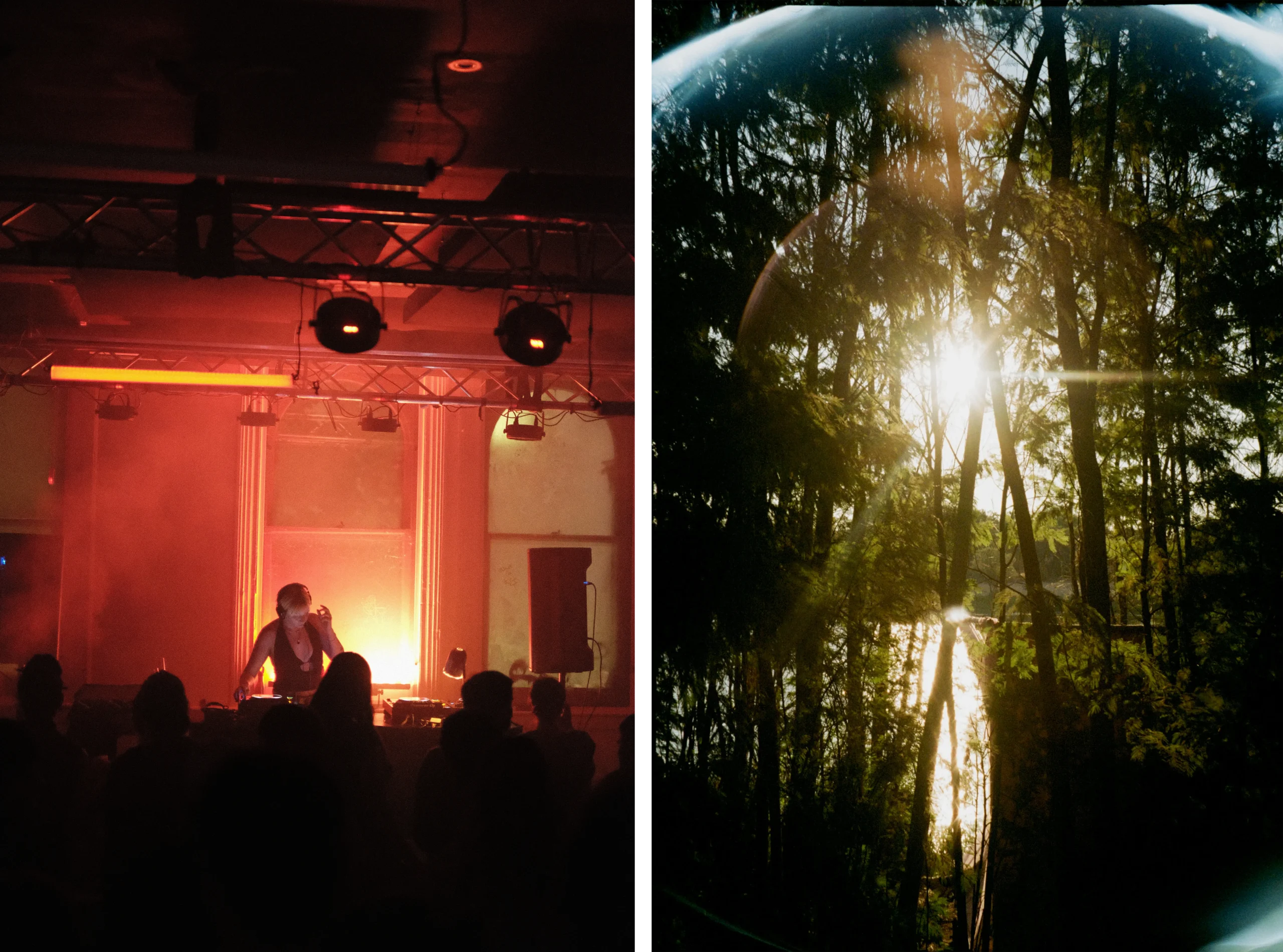
So seeing as it’s your first interview on the site I thought we’d go back for a minute. Can you tell us a little bit about your early formative musical years? What are some of your earliest musical memories that may have laid some initial foundations do you think? “There’s one moment that really stands out as the beginning of it all: dancing at Tresor when I was 19. I remember feeling completely hypnotised and mind-blown by what was happening in that space. That night really sparked my love for techno and, I became obsessed. I moved to Ngunnawal and Ngambri Country (Canberra) to study, and the scene there was largely driven by student-led parties in warehouses or outdoors. These raw, community-driven spaces fuelled my curiosity and gave me the freedom to explore both the sound and culture of electronic music: immersing myself in DJing, dancing, organising parties, and even throwing a rave.
About a year later, I went to Strawberry Fields Festival, and hearing electronic music surrounded by trees and the crisp open air left such a strong impression on me. Though these three formative experiences were quite different, they all followed a similar trajectory, shaping my understanding of how influential space can be in creating an experience. I think now, these memories stand out as particularly formative, as environment now feels so crucial to how I listen to, play and create music.”
And how quickly did that turn into say getting a pair of decks and fiddling with music programs? Do you recall a particular year where the initial interest turned into something more serious? “Within a year of my initial ‘techno awakening,’ I was getting my friend to teach me how to DJ. What started as after-party fun turned into my first gig at a bar, and soon I found myself playing at house parties and raves. It was all unpaid work at first, so the stakes were low, and I was surrounded by friends – where the weirder, the better. It was all about having fun and making people move.
My intense passion for music was unshakeable, so after a few years I followed my heart to Naarm (Melbourne) in 2022 to pursue it more seriously. It wasn’t until I started playing more gigs and my production gained attention I began to think of myself as serious about music. I guess it wasn’t until my first Europe shows in 2023 that I adopted a more professional outlook, and being a DJ really became my ‘job’ (though I hate to use that word). Music still remains my greatest passion, and doing it every day never feels laborious or like work – it’s something I love deeply.”
I’m not sure where in Australia you grew up, but can you tell us about some of the parties you were attending where you decided this was a style and sound you wanted to pursue? Was it a mixture of people you were surrounding yourself with too? “I grew up in various places across Australia, and I also spent some time in Canada. Mostly though, I’ve lived on Gadigal Land, and moved to Ngunnawal and Ngambri Country (Canberra) at 19 to attend university. When I was there, the scene was small but full of energy. I was playing ravey, fast sets that jump between a lot of different genres, always wanting to shock people (in the best way).
It wasn’t really until my move to Naarm post-lockdown that my sound started to evolve to include slower, deeper, more IDM-focused music. The cause of this evolution was twofold: the introspective, home-listening style encouraged by lockdown, alongside immersion in the experimental scene in Naarm. Meeting people like Harrison (Steeplejack) and attending parties that championed forward-thinking, experimental music helped me push the boundaries of what I was playing and making – showing that dance music is truly anything you want it to be. Being in spaces surrounded by open-minded crowds where those genres were truly appreciated opened new ways to experiment with DnB, IDM, and bass music in a club setting.
Now, my sound feels like a blend of both worlds: deep and hypnotic when playing in clubs (though I tend to keep mixes more ambient leaning), but I still love returning to fast, groove-driven tracks when the vibe calls for it. There’s something special about the warmth and weightlessness of faster music – the big kicks, the intensity, but with a trippy, ethereal feel.”
One of your first tracks you put out was ‘The Balance’ on the second PROXIMITY compilation from Pure Space. How long did it take you to feel comfortable in sending out your music to people? “Not long really! I always had the mentality that I had nothing to lose by sending music to people – the worst that could happen was they don’t reply. The first track I published on SoundCloud was actually ‘Bush Rain’. After that, I unexpectedly got interest from people, and Salt Mines asked for demos. I didn’t have any at the time, so I spent two weeks at my family home on Gadigal Land making music and sent that to them on a limb – and the rest is history.”
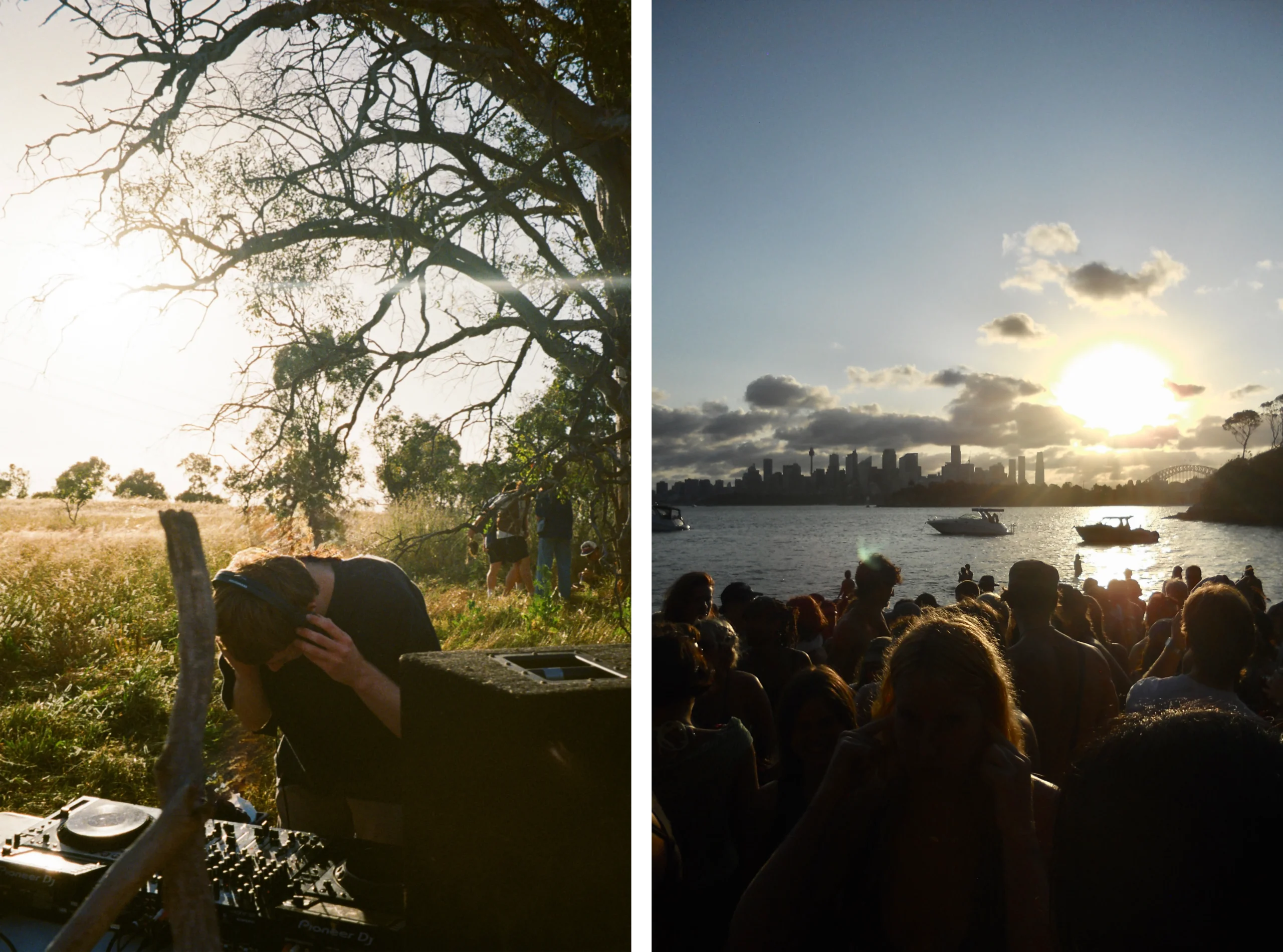
2022 seemed like a breakout year for you in terms of your productions too with the release of your Di Plastica EP on Salt Mines and your Reverie EP on Pure Space. Can you tell us a little bit about putting out those releases? Did you get into a good production rhythm that year? “I learnt so much working with Salt Mines and am very grateful to Geordie and Ru (the label heads) for the opportunity. I was honestly so inexperienced, but somehow it worked in my favour for that release – I somehow ended up creating something that didn’t neatly fit into any genre, purely from a lack of knowledge about sound design and genre conventions. I literally knew nothing about Ableton and felt like such an amateur. The tracks weren’t even mixed, but because I was so new and didn’t realise how little I knew, I felt like I had nothing to lose.
I then released with Pure Space, working with Andy Garvey, who is the biggest boss, and extremely organised and caring. I never want to be pigeonholed as an artist, so this EP was like a reaction against my first one – doing something completely new and different, delivering something quite experimental and ‘undanceable’.
I started using Ableton back in 2020 and since I first downloaded it, I would sit there for hours and hours making music. So, while this release helped my confidence, the rhythm of constant production has always felt natural to me.
What sorts of themes have you explored in your productions over the years? Do you prefer to hone in on a specific concept or direction for each project, or is that something that reveals itself through the process of creation? “Pretty much all of my releases have, in some way or another, been inspired by the experience of being in nature during a festival, or an imagined trip through another dimension. When I’m creating music, I recall the feeling or moment in time and try to recreate that through sound. I prefer to have a specific concept or narrative as it helps me stay focused on the task at hand. This overarching story helps me to create a consistent vision and (attempt to) world-build through music and art.”
What can you tell us about performing your debut live set at Paradiso in Amsterdam? And then the Aus debut of it at Miscellania? Did they feel like two very different sets? “Oh yes, playing my first live set was one of the scariest musical things I’ve ever done. I’d been wanting to play live for so, so long, but I only had two months’ notice for the first set and ran around like a headless chook: (1) trying to actually figure out how to play live, and (2) making the music. I had a whole weekend of gigs before basically going straight from my Saturday night set to the airport to soundcheck in Amsterdam. But honestly, once I got up there, I was so calm and happy, and felt so looked after. The production is absolutely insane, and there are so many amazing staff and sound techs there – you really feel like if something goes wrong, you’ll be fine.
The next time I played live was at Miscellania with Steeplejack x Bust, and it was such an honour to play there. Steeplejack had been so formative in shaping my musical sound, and I really admire the people who run Bust. It was largely a party of friends and acquaintances, and there was a circus theme, so everyone was dressed in these amazing clown costumes.
Of course, I was overambitious and created a completely new set in the two months prior (again without a studio) and really burnt myself out doing so. Nevertheless, it was so special to be able to share sounds with friends in such a warm environment. I’ve learnt a lot from playing live, and it’s really helped my production become more groove-focused and danceable. Before that, I never really felt like my music was geared towards the dancefloor – it occupied a weird liminal space between downtempo and dance music.”
As the head of your label Kinesis, what vision do you have for the label, and how do you go about selecting artists and music that you feel share that vision? Can you tell us a little bit about what went into KINES01? “Kinesis was born out of my own experiences as a female producer in a male-dominated industry, where I often felt intimidated by the inaccessibility of the language and the demographics. I wanted to create a platform that could support underrepresented artists who are women, trans, non-binary, gender non-conforming, or otherwise gender-diverse – to help them learn, grow, and flourish.
Originally, Kinesis was a platform for ‘recordings’ at bars and radio stations in Naarm (Melbourne). I ran it as a mix series for a while, with a focus on experimental and left-field electronic music that fuels the mind, body, and soul. The goal was to curate music that feels timeless and free (or as much as possible) from trends – something you could return to years later and still connect with. In such a fast-paced world, where the music industry and the increasingly terrifying world at large can feel like a non-stop machine, I wanted to create a space that offered some kind of escape.
KINES01 was an extension of that vision – a microverse shaped by artists within the Naarm scene whose work I deeply believe in and love. It was a way to spotlight another side of their artistry and create something that felt personal and immersive.
As for the future of Kinesis, I’m in no hurry to rush out releases. I never want it to feel forced, and I’m slow with things sometimes, so I’d rather let it unfold naturally. FLINTA artists have something truly special, unique, and original to say with their music, and I hope to keep nurturing and platforming that as the project continues to evolve.”
How has the Australian electronic music scene shaped your career, and what unique elements do you think it brings to the global stage? “The so-called Australian electronic music scene is unique in that people aren’t bound by traditional conventions when making music or DJing. There’s less of a ‘tradition’ of sticking to a specific genre, which allows the music and the approach to be much more fluid. Artists are very receptive to both internal and external influences, and there’s a real openness in the crowd – people are eager to experience something new and different. This gives artists the freedom to experiment and explore during sets without the pressure of conforming to established genres or sounds. Genres come and go quickly, but one constant is the music’s connection to the psychedelic, organic, and natural feeling that runs through it.
This openness and experimentation are, I think, part of what makes our music so interesting on the ‘global stage.’ Our musical influences and formative musical experiences are so different from those in other places, so naturally, what we create sounds distinct.
It’s not just about electronic music either – there’s something uniquely distinct about rock music or movies created here. It’s a feeling I can’t quite describe, but it’s something you must experience firsthand. If someone asks me about the scene, I always tell them, “You have to come here to a 500-person festival and experience it firsthand,” because that’s where the sound truly shines.”
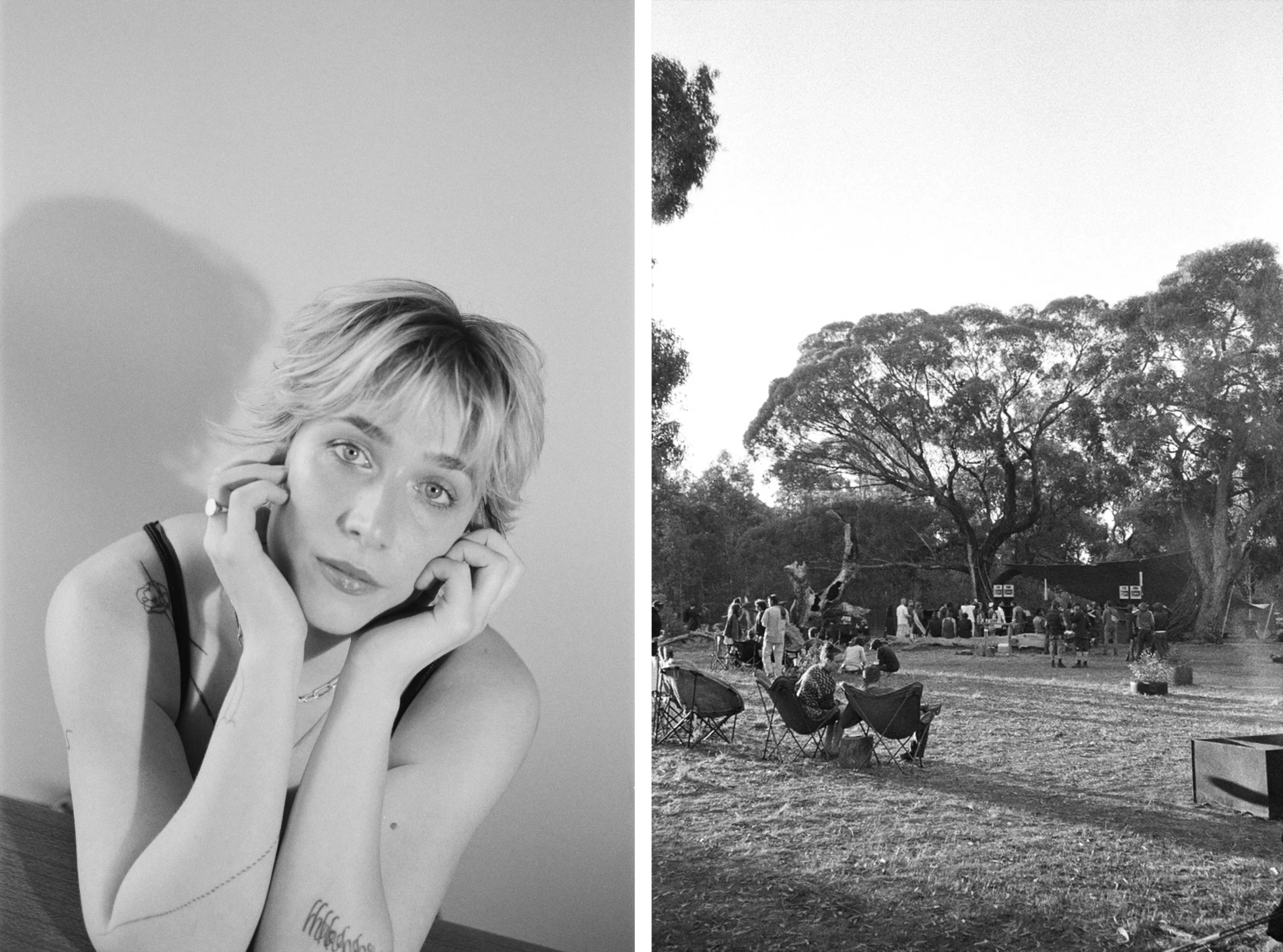
If you had one day to take a fellow artist on an adventure around your city, where would you go and why? Are there any specific cities you’ve always admired or wanted to experience? “If I were living on Gagidal land, I’d take them on this trail around Guringai (Ku-ring-gai Chase National Park), finishing at secluded beach. Then we’d head to this lookout to watch the sunset, go to the pub for a beer, and dine at one of my favourite restaurants there called Poly. There are so many cities I’ve admired and dreamed of experiencing… but the ones that come to mind first are places with my dream clubs and food. I have Chinese ancestry and have always dreamed of playing at Oil in Shenzhen and travelling around China. I’ve also been dying to experience Bassiani in Tbilisi, Georgia, and spend some time in the mountains.”
You’re seamlessly able to blend genres like IDM, drum and bass, techno and ambient. How do you approach combining these styles when you play out? Has there been a particular set where you managed to mix all to a super receptive crowd? “I think because I used to play so many different genres in one set, sets that feel electric to other people feel fairly straightforward to me. Moving through IDM, techno, and DnB makes sense to me if the ‘vibe’, feeling, or energy of the tracks can match each other to fit into the overall narrative. For me, as long as there isn’t a drastic change in energy or direction, it makes sense to change up a beat or rhythm. One of my earliest inspirations was Objekt, after he blew my mind at Pitch 2020, and that really influenced how I frame DJ sets.
In terms of my approach, I think the most important thing is knowing your audience and understanding the context. Obviously, sometimes this is difficult, but it definitely helps me to understand how much I can experiment. I usually just prepare a playlist of songs ascending in energy and emotion, irrespective of genre, so that if I do move between genres, it still makes sense (at least to me). If I am wanting to go in a certain direction, maybe I’ll throw in a test track to see how the crowd reacts, and if they aren’t really with me or a break throws them off, I’ll just go back to a straighter groove. But if they are open to surprises, I know I can experiment a bit more. Honestly, though sometimes people just want to have fun and get into a groove, and I feel that too, so I also love playing quite straight techno and trance.
The set that springs to mind is my set from Worm Turns 2023 – a beautiful 500-person festival 3.5 hours outside of Naarm (Melbourne) at the foot of the Gariwerd (Grampians) mountains. The festival was curated by the amazing Rosa and comprised such an open-minded and sweet crowd that felt locked in for all the twists and turns.”
You played at European venues like De School, Tresor, Blitz, Ormside Projects, OHM in the last two years with 2024 being especially busy. How did these international experiences influence your artistry do you feel? “Playing in Europe over the last year and a half has constantly challenged me, always learning and growing. I’ve been able to hone in on my sound and build confidence in myself as an artist through exposure to consistently attentive crowds, good sound systems, and space. The standard is incredibly high, and exposure to this music – both as an artist and dancer – is inspiring, teaching me the value of creating a hypnotic groove.
It’s such an immense privilege to have had these opportunities, and I’m incredibly grateful for all the experiences so far. None of this would be possible without the hard work of my amazing agency, the promoters, and the dedicated club and festival staff and volunteers.”
Looking back on your career so far, what moments stand out as particularly defining or rewarding? “There have been so many ‘pinch me’ moments, but the ones that feel particularly defining are: my first EP on Salt Mines, which was pressed on vinyl; Donato Dozzy playing this record at Inner Varnika 2023; playing at Worm Turns 2023; releasing on Animalia; playing at the Omen Wapta Weekender at Garage Noord 2024; my first live set at STOOR during ADE at Paradise last year; playing as Mosta last week; and getting booked to play Dekmantel (after volunteering there last year haha).”
Can you tell us about three albums that:
a) define you getting into electronic music in general
“This album by Roza Terenzi was highly influential in my Salt Mines work. I saw her play a Strawberry Fields 2020 and it blew my mind.”
b) maybe a midway album when you were fully invested in DJing
“I can’t choose, just one for this, but these two releases: OK EG on Animalia or Sam Brickle on Steeplejack are both outstanding pieces of art. They really opened my brain to deep IDM soundscapes.”
c) and a more recent one
“This collaborative album by Polygonia and Rrose is just it—dark and driving but also has an innate warmth and lightness to it.”
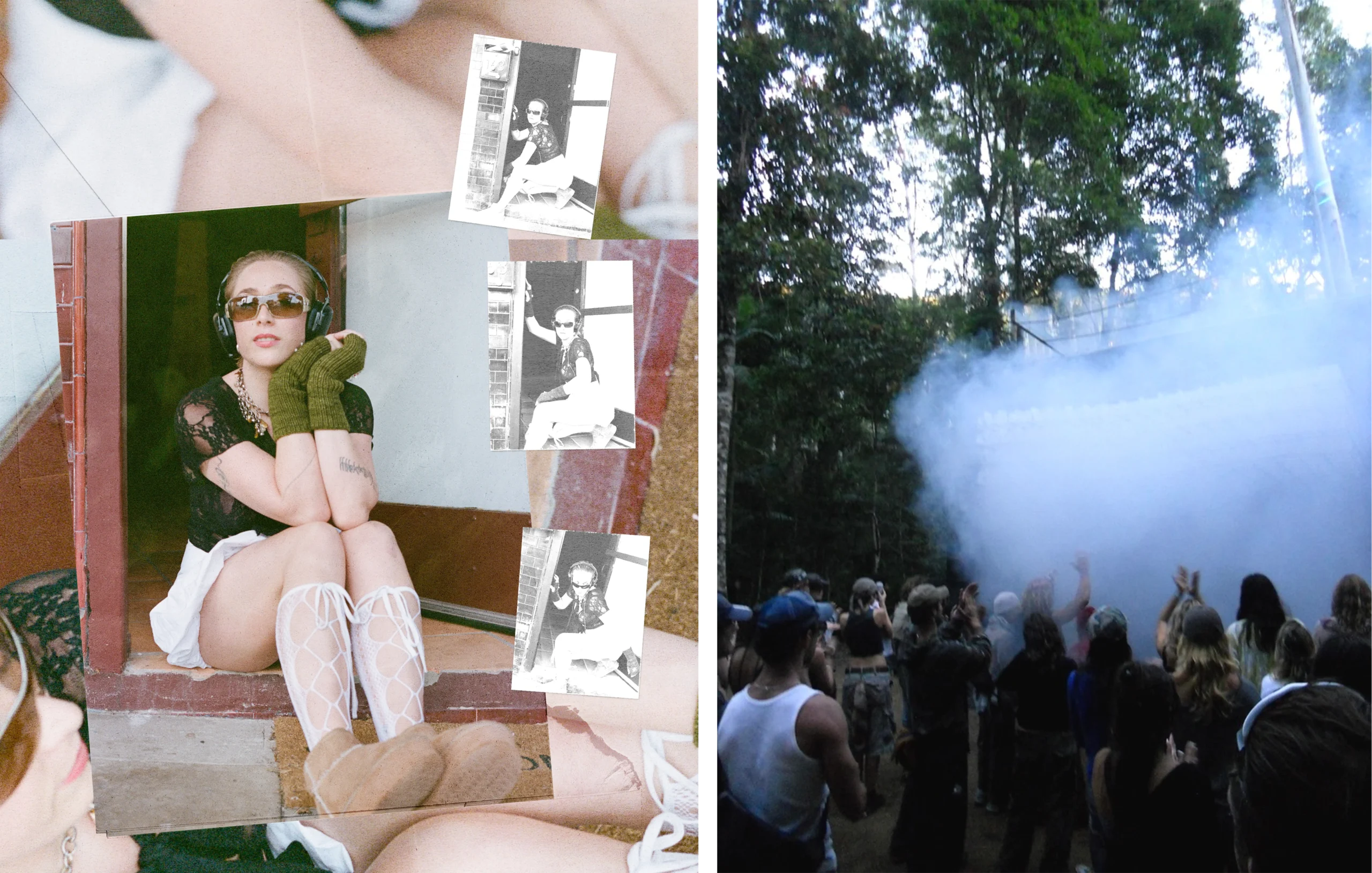
What sort of other hobbies or interests do you have outside of electronic music? Are there any books, films, shows or other things you’ve seen or been reading/watching that you might want to share? “Outside of music, I’ve always been drawn to social justice. I studied Arts (Social Sciences) and Law at uni, focusing mostly on social justice and law reform. I’ve had brief experiences working in community legal centres, but I’d love to spend more time supporting efforts to improve access to justice for marginalised communities. This has been a bitsout on pause while I’ve been touring over the past year and a half, but it’s still something that I really care about.
In my downtime, I love to cook, especially for others. Lately, I’ve been experimenting with Photoshop – it’s been a fun creative outlet when my ears need a break from music. During the week, I keep things pretty chill and love staying healthy by going to the gym, eating well, spending time in nature with my dog, hanging out with friends, and reading.”
Could you describe the process of creating this mix? Was there a specific message or feeling you wanted to convey? “This mix was based on the concept of a slow descent in and out of chaos – an imagined trip through a magical garden and down a rabbit hole. It was influenced by my natural surroundings, dancing outdoors, and summer festivals. I wanted this mix to capture the power and pace of a festival set – starting quite minimal, building, and eventually erupting into more expansive techno and trance.”
Last, usual question from us, what was the last thing to put a big smile on your face and when was the last time you had a proper dance?
“Last thing that put a smile on my face: the sunshine
Last proper dance: I had a proper dance at Mach 1 after I finished playing. Highlights include dancing D-Grade, Kaisei and Tangerine’s sunrise set <3″
Zara: Soundcloud, Instagram, Resident Advisor, Bandcamp
Main photo by Brontë Godden
You can download Truancy Volume 349: Zara in 320 kbps and view the full tracklist on Patreon here. Your support helps cover all our costs and allows Truants to continue running as a non-profit and ad-free platform. Members will receive exclusive access to mixes and tracklists. We urge you to support the future of independent music journalism—a little goes a long way. If you need any IDs though, please leave us a comment on the Soundcloud link and us or Zara will get back to you with the track :)

